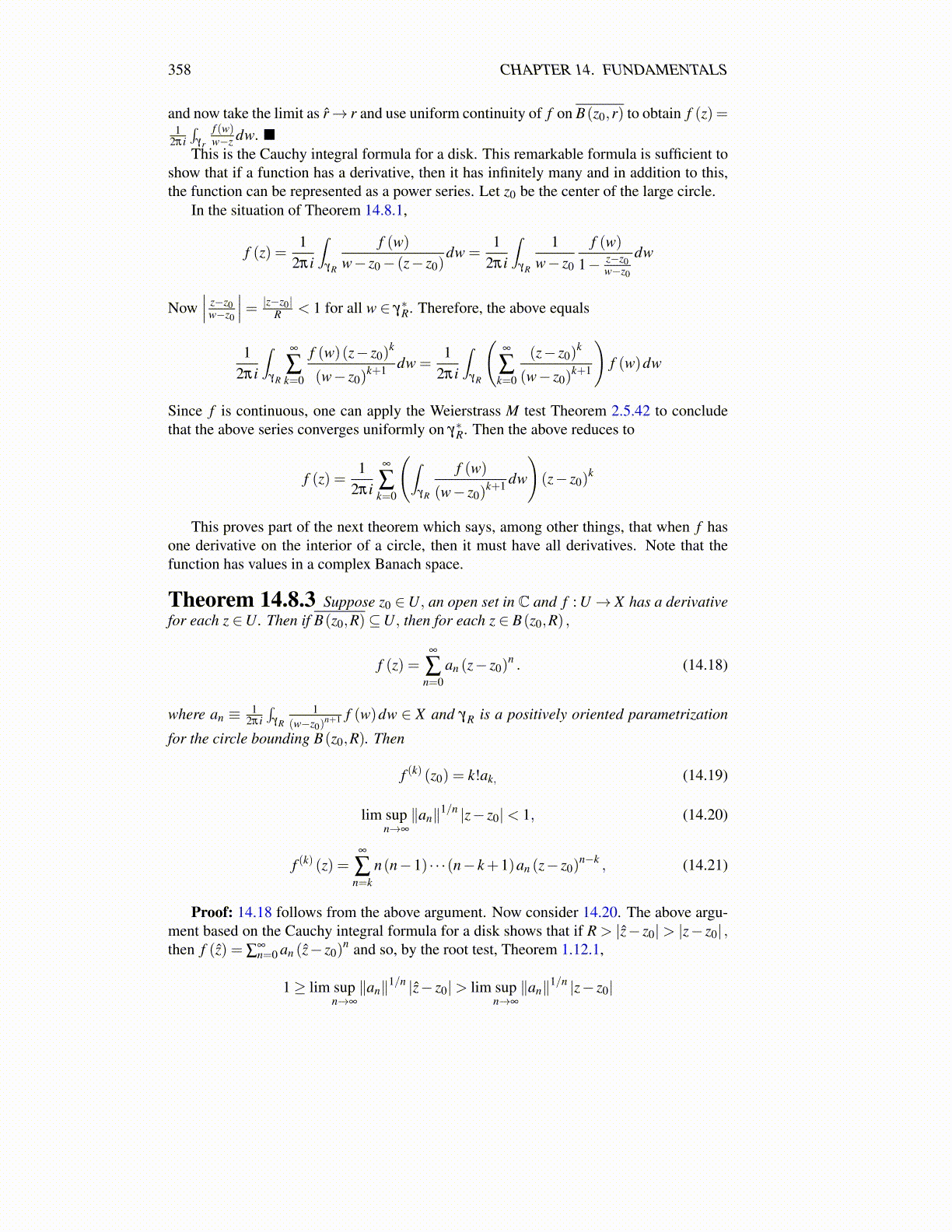
358 CHAPTER 14. FUNDAMENTALS
and now take the limit as r̂→ r and use uniform continuity of f on B(z0,r) to obtain f (z) =1
2πi∫
γr
f (w)w−z dw. ■
This is the Cauchy integral formula for a disk. This remarkable formula is sufficient toshow that if a function has a derivative, then it has infinitely many and in addition to this,the function can be represented as a power series. Let z0 be the center of the large circle.
In the situation of Theorem 14.8.1,
f (z) =1
2πi
∫γR
f (w)w− z0− (z− z0)
dw =1
2πi
∫γR
1w− z0
f (w)1− z−z0
w−z0
dw
Now∣∣∣ z−z0
w−z0
∣∣∣= |z−z0|R < 1 for all w ∈ γ∗R. Therefore, the above equals
12πi
∫γR
∞
∑k=0
f (w)(z− z0)k
(w− z0)k+1 dw =
12πi
∫γR
(∞
∑k=0
(z− z0)k
(w− z0)k+1
)f (w)dw
Since f is continuous, one can apply the Weierstrass M test Theorem 2.5.42 to concludethat the above series converges uniformly on γ∗R. Then the above reduces to
f (z) =1
2πi
∞
∑k=0
(∫γR
f (w)
(w− z0)k+1 dw
)(z− z0)
k
This proves part of the next theorem which says, among other things, that when f hasone derivative on the interior of a circle, then it must have all derivatives. Note that thefunction has values in a complex Banach space.
Theorem 14.8.3 Suppose z0 ∈U, an open set in C and f : U → X has a derivativefor each z ∈U. Then if B(z0,R)⊆U, then for each z ∈ B(z0,R) ,
f (z) =∞
∑n=0
an (z− z0)n . (14.18)
where an ≡ 12πi∫
γR1
(w−z0)n+1 f (w)dw ∈ X and γR is a positively oriented parametrization
for the circle bounding B(z0,R). Then
f (k) (z0) = k!ak, (14.19)
lim supn→∞
∥an∥1/n |z− z0|< 1, (14.20)
f (k) (z) =∞
∑n=k
n(n−1) · · ·(n− k+1)an (z− z0)n−k , (14.21)
Proof: 14.18 follows from the above argument. Now consider 14.20. The above argu-ment based on the Cauchy integral formula for a disk shows that if R > |ẑ− z0|> |z− z0| ,then f (ẑ) = ∑
∞n=0 an (ẑ− z0)
n and so, by the root test, Theorem 1.12.1,
1≥ lim supn→∞
∥an∥1/n |ẑ− z0|> lim supn→∞
∥an∥1/n |z− z0|